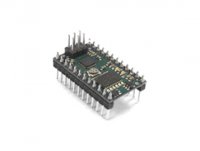We are not out of the woods yet as this thing did not cut the mustard once it was in the air. Jitter is back again.
Starting to look more like an algorithm problem or they left off the board some filtering components.
As it is a cross axis problem it could be quite a serious nut to crack.
My guess at the moment (having never even seen one of these but going only by anecdotal evidence presented here and an instinct for diagnosis) is that it's multiple problems that are masking and complicating each other:
- cross-axis "pollution" in the algorithm (the oddest problem since evidently it didn't appear in PH's in-house testing),
- excessive
production of and/or
sensitivity to EMI (for which PH offered an apparently ineffective solution),
- insufficient "bandwidth" to cope with third-party components whose "sum of errors" falls outside the (apparently) narrow range tested by PH (possibly the most unforgivable error).
Obviously separating these causes and effects requires a methodical approach, some fancy bench-test equipment and, above all, access to the circuit diagrams and source code. So we can flail around in the dark all we want, but only PH themselves can solve this. (Kinda underlines the advantages of open source, doesn't it?)
The most worrying fact is that PH (and some third-parties) tested this (and showed videos) and judged it to be market-ready.

